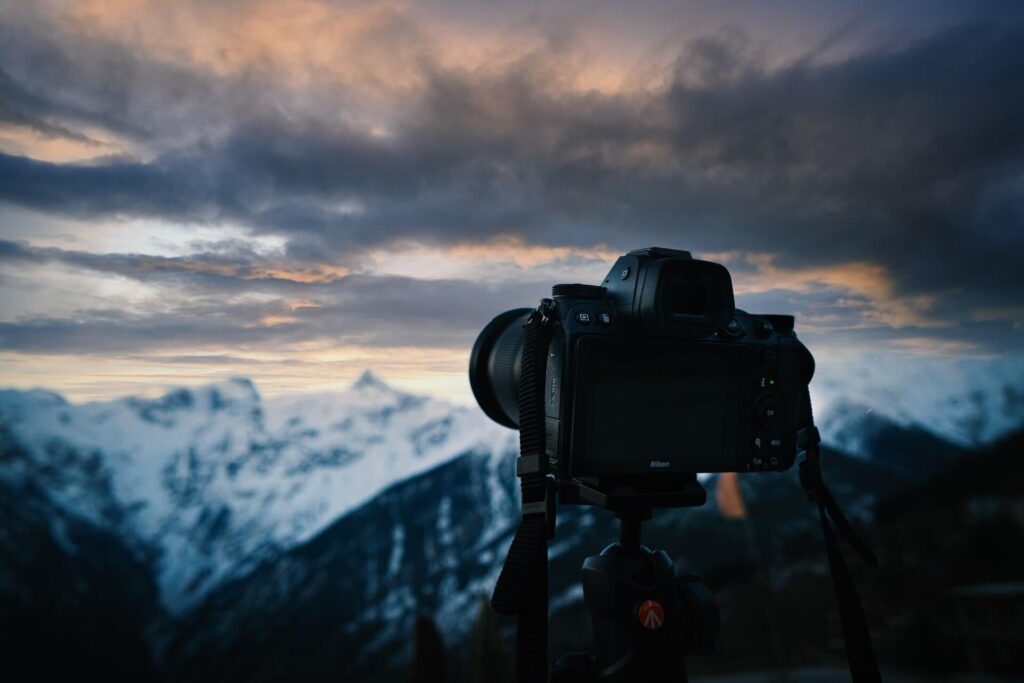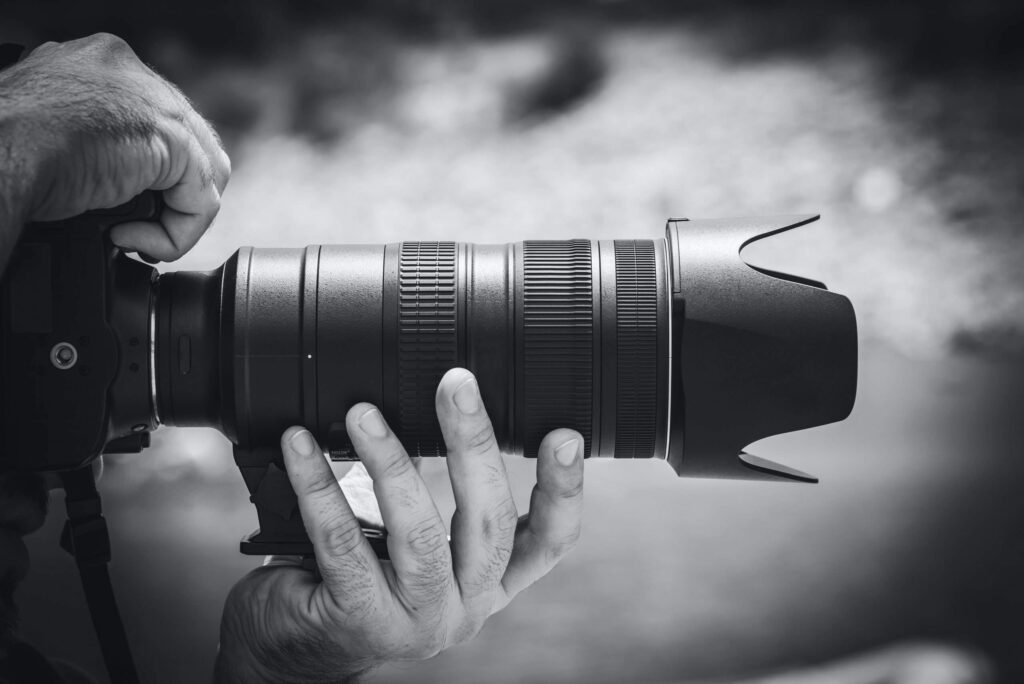Knowing what controls depth of field (DoF) has the potential to greatly improve your photography. This is because depth of field has a huge impact on the overall feel of your photos.
In this guide, you are going to learn how to control depth of field by covering these topics:
- Depth of field definition
- Importance of depth of field
- Factors affecting depth of field
- Controlling depth of field to create amazing photos
- Etc.
P.S. If you’re interested in seeing some of my best photography work, check out the Gallery or my Instagram. Some of my images are also available as photo prints, with a selection of my favorites HERE.

What is Depth of Field in Photography?
Depth of field is essentially the region within a photo that is in focus and sharp. Wherever you place your focus point within a scene will be the point that is tack sharp, but a percentage in front of and behind your focus point will also be acceptably sharp.
It is also important to know that it is not an equal zone in front of and behind the focus point that’s in focus. Rather, approximately ⅓ of your depth of field will be in front of the focus point and ⅔ behind.
The main factors that you can manipulate to control depth of field are aperture, focal length, and distance between you and your subject. These will be discussed further below.
Why is Depth of Field Important?
Controlling depth of field is super important because, at least in my opinion, it gives you the most artistic control of an image. Using the proper depth of field is the make-or-break aspect when it comes to vast landscapes and dreamy portraits.
For example, using shallow depth of field for a dreamy portrait is what allows for the subject to be tack sharp while the background is pleasingly blurred (bokeh). With a shallow depth of field, only a small portion of the scene will be in focus, which allows for excellent background separation. Using a deep depth of field in this scenario would result in the background also being in focus, likely resulting in many distracting elements throughout the scene.
On the other hand, with the vast landscape, you would want a deep depth of field to ensure the photo is sharp from corner to corner. This is an important thing to consider when you are facing a beautiful vista. Nothing would be worse than getting your photos onto the computer and realizing that the mountains in the background are soft.
Other shallow depth of field examples could be isolating an animal in wildlife photography, flower pictures in macro photography, or if you want to isolate a single subject in street photography.
Alternatively, you may choose to utilize a deep depth of field in wildlife photography if you also want to capture the animal’s habitat or in portrait photography if you are photographing a group.

Factors Affecting Depth of Field:
What controls depth of field is a combination of three variables: aperture, focal length, and the distance between you and the subject. It’s important to understand how these three variables work together because there may be times that you don’t have control of one of them.
For example, you don’t need to feel limited if you don’t have the money to buy these big expensive lenses (side note, the best gear is the gear you already have). If you don’t have a lens that opens up to f/2.8, try getting closer to your subject and you will see that great bokeh!
Now let me explain them.
Aperture (f-stop):
Aperture is a key factor affecting depth of field. I discuss aperture in greater detail in my exposure triangle article, which you can find HERE.
However, to recap, the aperture of your lens is the hole that allows light to pass through the lens to the sensor. The smaller the number, the larger the aperture, and vice versa. The larger the aperture, the more shallow the resulting depth of field will be, and vice versa.
The way I think of it is:
- Small f-stop number (large aperture hole) = less in focus (shallow depth of field)
- Large f-stop number (small aperture hole) = more in focus (deep depth of field)
So in general, if I am photographing a landscape and want a deep depth of field to produce an image that is sharp from front to back, I will often select an aperture (f-stop) of around f/11. On the other hand, if I am taking a portrait I will open up the aperture (f-stop) to somewhere around f/4 or f/2.8 to blur the background somewhat.
Distance Between Lens and Subject:
The next variable that will affect your depth of field is the distance between you and the subject that you have focused on.
The closer you can get your lens to your subject, the more shallow the depth of field will be. For example, if you take a portrait at f/4 from 50 feet away and from 5 feet away, the depth of field will be more shallow in the photo taken from 5 feet away.
What this means for you (assuming the subject is cooperative or stationary) is that if you are not seeing the bokeh that you desire and your aperture is already wide open (lowest f-stop) you can try moving closer.
Focal Length:

The third and final variable that controls depth of field is the focal length of your lens. The longer the focal length, the more shallow the depth of field will be.
For example, if you take 2 photos of a subject from the same position, one at 300 mm and the other at 85 mm, the image taken at 300 mm will have a more shallow depth of field.
This is one of the reasons that using a telephoto or short telephoto lens for portraits can be appealing. With the longer focal length, it is much easier to produce pleasing bokeh with a more shallow depth of field.
Putting it All Together:
To recap, manipulating aperture, distance to the subject, and focal length are what controls depth of field.
Shallow depth of field:
- Large aperture (small f-stop number)
- Closer to subject
- Longer focal length
Deep depth of field:
- Small aperture (large f-stop number)
- Farther from subject
- Shorter focal length


So if you want to achieve the shallowest depth of field that you can, get close to your subject with your longest lens (higher focal length) with the widest aperture. Hell, if money isn’t an object grab your 400 mm f/2.8 lens and walk right up to the person you’re photographing. Now that’s a shallow depth of field!
Thankfully, you don’t need $10k to achieve a shallow depth of field. That was just an extreme example. In my case, I also don’t have that kind of money for a lens. For the majority of my wildlife shots, I use a 150-600 mm lens. At 600 mm the widest aperture is f/6.3, which of course is not that large of an aperture. But with 600 mm of focal length, if I can get relatively close to an animal where it is separated from the background, I can still achieve a narrow depth of field.
This goes to show that these are additive variables. You don’t necessarily need all 3. On the other hand, you can manipulate the different variables to cancel each other out. For example, if you need to use f/2.8 due to low light but don’t want a shallow depth of field, then as long as you are using a wider angle lens (shorter focal length) the result will be a more moderate depth of field.
Hyperfocal Distance and Calculations:
I am not going to go into detail about this at this point. Honestly, I just don’t think they are necessary or beneficial to consider, at least at this point.
With that said, the hyperfocal distance is a certain focus point within your scene where you will have the maximal depth of field. This also depends on your selected aperture and focal length. Some charts and apps can help you with this if you must investigate, but I don’t ever determine this for my shots and have yet to feel hindered because of it.
Instead, I just operate on a tried and true rule of thumb of focusing about ⅓ of the way into the scene. This is in reference to landscape shots by the way. Assuming you are using a wider lens and an aperture of f/8, f/11, etc. you shouldn’t have an issue with this method.
Conclusion:
Depth of field is essential for you to master. It plays a dramatic role in your creative process. As discussed previously, this is why I recommend that you use aperture priority mode at least 95% of the time as you will be locking in your aperture. As we discussed, aperture is one of three variables that controls depth of field.
Now get out there and start practicing! Make depth of field a conscious decision, not an afterthought. When you look at your subject, decide if you want a narrow depth of field or deep depth of field, and adjust the variables that you are physically able to. If you are unsure, take photos with shallow, deep, and moderate depth of field of the same subject. Afterward, you can compare what looks better to your eye and you will become a pro at controlling depth of field in no time!
If you missed my previous article about camera/shooting modes, check it out Here!
Thanks for reading to the end. Your support means the world to me! If you’re interested in seeing some of my best photography work, check out the Gallery or my Instagram. Some of my images are also available as photo prints, with a selection of my favorites HERE.





I’m extremely inspired together with your writing talents and also with the layout in your weblog. Is this a paid subject matter or did you modify it your self? Anyway stay up the excellent quality writing, it is rare to see a nice blog like this one nowadays!
Thank you! I have done all of the work myself!